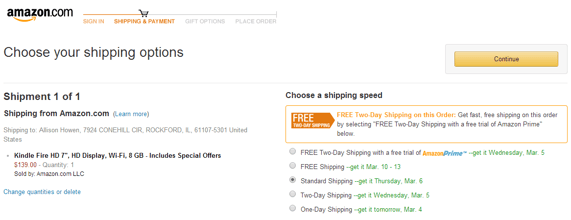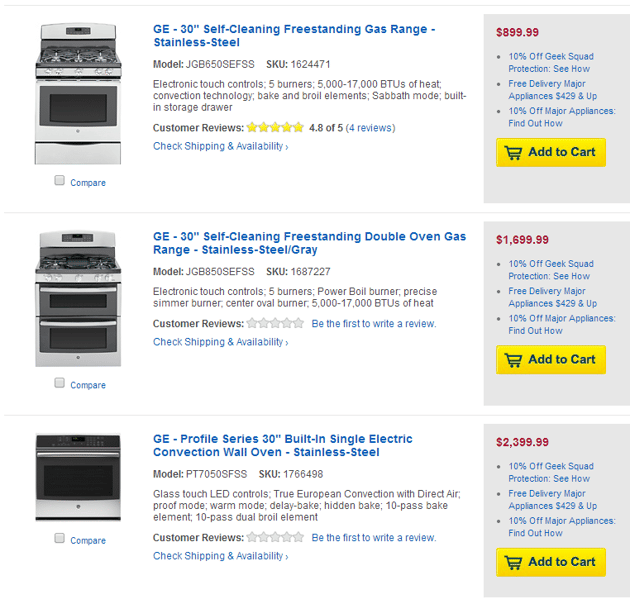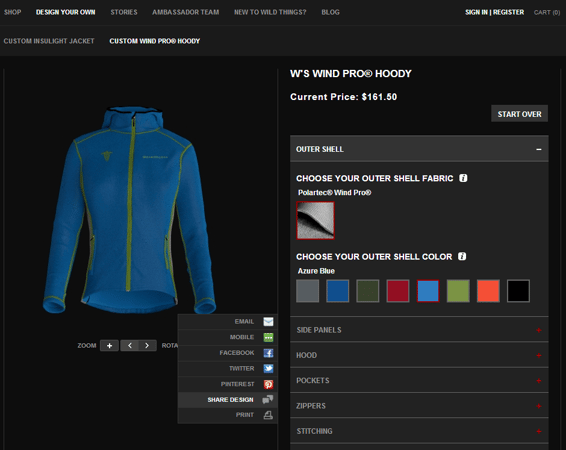5 Reasons Amazon Wins at Ecommerce

When it comes to ecommerce, Amazon is king. Not only does the online retailer offer millions of products, but it also provides a good user-experience with its digital best practices and top-notch customer service.
Although those factors make it difficult for smaller retailers with less resources to compete against the ecommerce juggernaut, it doesn't mean that they should stop trying. Instead, retailers should look at what makes Amazon the greatest and emulate the online retailer's digital initiatives when possible. To get started, discover five reasons why Amazon wins at ecommerce.
Personalization
From the moment a user visits Amazon.com, the ecommerce retailer works to personalize their experience. Once a registered user, Amazon can move closer to having a one-to-one conversation with a shopper by asking him or her to rate products in order to provide more personalized product recommendations in the future. The company also monitors users browsing and purchasing patterns to improve upon its recommended products. Plus, Amazon puts an emphasis on personalization by using the majority of its homepage to feature personalized, recommended products to its members.
Online retailers can compete with Amazon by also creating a personalized experience for their customers. Monetate, for instance, offers a product recommendation solution that enables retailers to upsell with relevant and complementary products. The solution is customizable, enables retailers to set rules for product recommendations, choose the location that recommended products will be displayed on Web pages and more.

Customer Service
Amazon has a reputation of taking care of its customers. In fact, a 2013 ForeSee study that looked at customer experiences with the top 100 brands on the 'Net named Amazon the winner, beating the likes of Nordstrom, Apple and Google. Moreover, the study shed light on the value of satisfied customers, finding that highly satisfied customers are 60 percent more likely to do business with the company again, 83 percent more likely to purchase more products and 77 percent more likely to give the brand a positive recommendation. These stats prove that customer service is a key driver to sustained success, and the retailers who take care of customer issues and complaints in a timely and appropriate manner will see an impact on their bottom line.
Prime Perks
Perhaps the biggest advantage Amazon has over other ecommerce retailers is its Amazon Prime offering. Prime provides members with unlimited free two-day shipping on millions of items on Amazon.com, as well as access to the company's streaming service Amazon Instant Video and the ability to borrow books from the Kindle Owners' Landing Library. Prime has been so successful that the service received more than 1 million customers in just one week during the peak of 2013's holiday shopping season.
While it is difficult for everyday retailers to compete with Amazon's Prime offering, merchants that sell on Amazon can use Fulfillment by Amazon (FBA) to store their products in Amazon's fulfillment centers. This makes their products eligible for Amazon Prime's free two-day shipping, which is more likely to entice consumers to make a conversion. Conversely, retailers could work on developing their own, scaled-down version of Prime for their store's top customers. For example, an apparel retailer could offer a VIP membership that customers could purchase to receive free two-day shipping on orders over $35, as well as to receive exclusive discounts and promotions from the retailer.

Review Cornucopia
One of the main reasons consumers research products online is to look at ratings and reviews from their peers, as the opinions of other consumers are highly trusted. Although the majority of online retailers offer a ratings and review feature on their site nowadays, it is not uncommon for this section to be empty or only feature a couple of reviews - just take a look at the example from Best Buy below. On Amazon, however, the ratings and review section is typically filled out by at least a few customers. Because of this, many shoppers will go directly to Amazon to research and purchase products in one place. That said, retailers can take steps to increase the engagement with their reviews, such as offering incentives or sending friendly reminders via email to shoppers who made a recent purchase.

Innovation
Year after year, Amazon continues to innovate in the ecommerce space, with Amazon Prime being just one example. In addition, Amazon has been implementing an offering called AmazonFresh on the West Coast, which provides free same-day and early morning delivery on qualifying orders of fresh grocery items and local products. Furthermore, Amazon partnered with the U.S. Postal Service to begin deliveries to Prime members on Sundays, while the company's CEO Jeff Bezos also made headlines by announcing the company is testing package delivery via drone, which could eventually allow Amazon to deliver packages in 30 minutes or less.
Although these initiatives are difficult for online retailers to compete with, there are other ways to attract attention to a digital storefront. For example, apparel retailers can implement a virtual fitting room, like Fits.Me, to increase traffic, engagement and conversions on their site, while other technology, such as Fluid's product customizer, enables consumers to create one-of-a-kind products directly from the product page.








